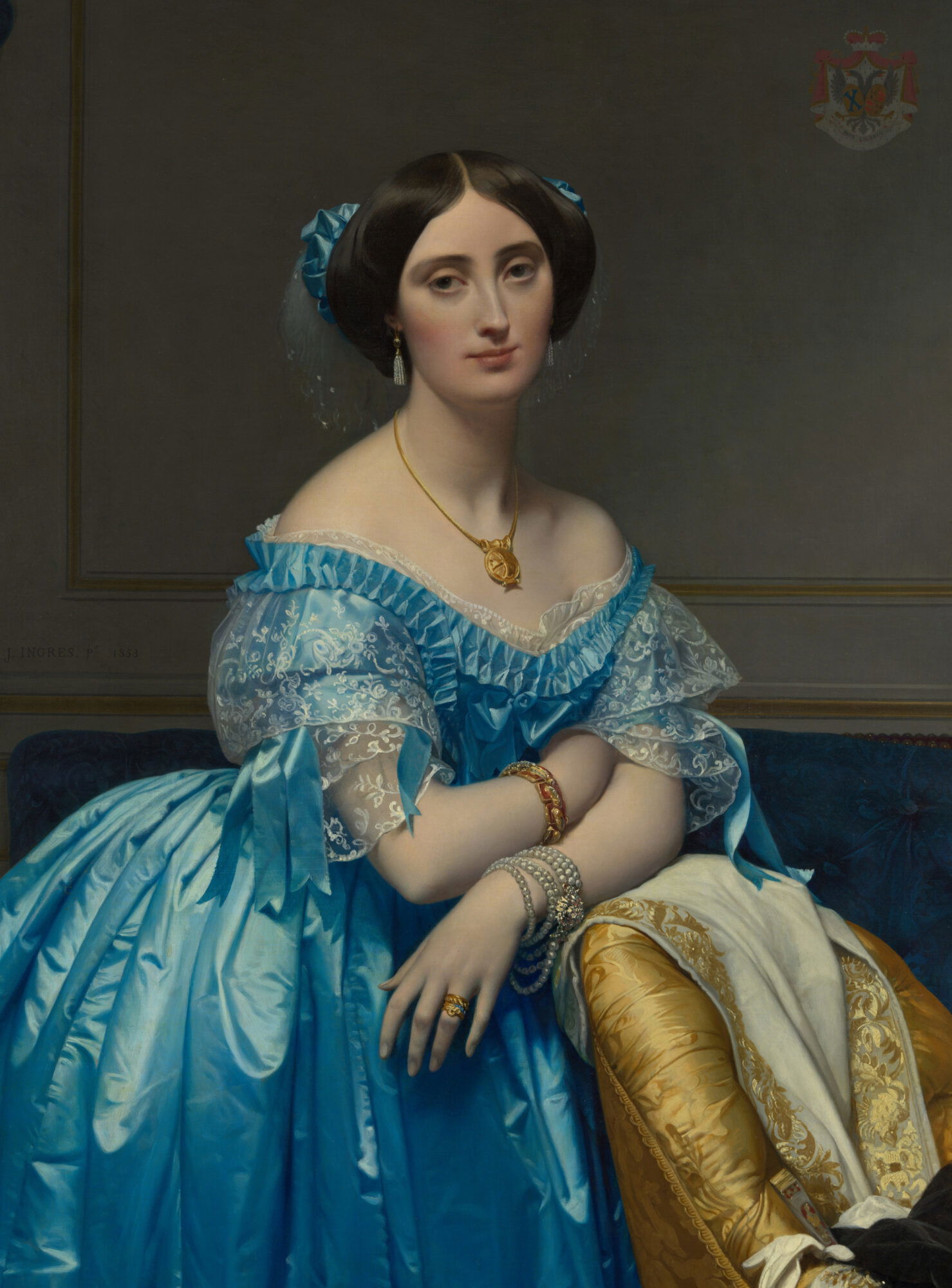Pearls were known before the introduction of written history so it is impossible to date their discovery to a time or a place. In attempting to understand who might have first worn natural pearls, Frederick Kunz in his seminal work The Book of the Pearl (1908) sets out his thesis that pearls were probably found by fish and seafood eating people living in coastal areas, likely to be India, when searching for food.
Treasure of an oyster: Tales of natural pearls | Part I
Natural pearls occupy a unique position in the pantheon of gemstones.
They are formed by a mollusc and as they require no further attention once created the natural pearl could be one of the oldest materials considered to be a gemstone.

For hundreds of years fine natural pearls realised eye watering prices – a perfectly matched string of pearls was a treasure of unfathomable value. Many ancient and sacred texts reference pearls, including, of course, the Bible, where in the Book of Revelation the twelve gates of heaven are said to be made from a single pearl, reflecting the glory and perfection of the eternal kingdom.

Before the advent of cultured pearls natural pearls were so rare and expensive they were only worn by the very rich or members of the noble classes. Today, cultured pearls are ubiquitous and almost regarded as an accessory, often accompanying more expensive gemstones. Despite the uncertainty over how and when they were discovered, wherever they appear there is reverence for pearls, along with allusion to their purity, beauty and desirability.

The woman is dressed in French-inspired clothing - luxurious yet restrained - she wears a single row of pearls at her neck and on her lavishly beaded headdress, edged in pearls, a brooch featuring pearls of a substantial size is pinned, another impressive pearl brooch is worn on her shoulder.
Pearls are created when an irritant becomes trapped in the fleshy mantle of a mollusc such as a pearl oyster or fresh-water mussel. The intrusive item then becomes coated with the same mother-of-pearl material found in the lining of the host shell, the secretion comprises alternating layers of aragonite (a crystalline form of calcium carbonate) and conchiolin (an organic protein that binds the crystals together). The concentric layers of translucent aragonite reflect light and give the pearl its lustre, whilst also dispersing light to produce a shimmering iridescence. Calcium carbonate accounts for around 85-90% of the pearl with the remainder made up of conchiolin and a small amount of water. Although not very hard, they register 2.5/3 on the Mohs scale where 10 is a diamond, pearls are strong and hard to break given their shape and composition.

Myths and history are littered with stories about pearls being dissolved in acidic liquids, most often vinegar, and thereafter drunk. Perhaps the most infamous advocate of this rare cocktail is Cleopatra, and she owned two extraordinary, inherited pearls. Cleopatra sneered at Antony’s attempts to exemplify luxury and his feasting on extravagant and rare foods, she wagered that she alone could consume the equivalent of 10m sesterces in one meal. At the close of the lavish feast in question, dessert was accompanied by a dish of vinegar. Cleopatra took one of the remarkable pearls from her ear, she plunged it into the vinegar and when it had broken down she knocked back the liquid. Lucius Plancus, a Senator and consul, acted as a referee, he swiftly secured the second pearl and declared Antony the loser. For a pearl to be readily soluble in vinegar it is likely it would need to be crushed, it certainly would have been more efficacious to have simply swallowed the pearl whole, and more economical as it could have probably been retrieved later, but this method would probably have lacked the intended jeopardy and drama.

In Hamlet, Claudius, Hamlet’s brother, says, “The king shall drink to Hamlet’s better breath; And in the cup an union shall be thrown, Richer than that which four successive kings In Denmark’s crown have worn”. “Union” here comes from the Latin word unio, the name given to pearls of exceptional size, and as stated by Pliny in Natural History, (published AD77-79). Philemon Holland’s (1552-1637) translation of Pliny’s work was published in two folios in 1601 (about the same time that Hamlet was written), and on pearls he relates ‘…our dainties and delicates here at Rome, have devised this name for them, and call them Uniones; as a man would say, Singular, and by themselves alone”. Unio is also the source for “onion” – in recognition of it being a single bulb and its imagined resemblance to a large pearl. The use of pearl to identify a small white onion, the pearl onion, demonstrates the historical bond shared by the two, and of course the pearly white onion is the finishing touch in a Gibson cocktail – rather more palatable than Cleopartra’s alleged potion.

The finest pearls have a good colour and lustre, with a kind of rosy bloom and a skin as near perfect and unblemished as is possible. As one would expect, the higher the colour and lustre of a pearl, the more valuable it is. Pearls are most often seen in white, pink, purple, black, gold and cream, although colours such as champagne, chocolate, blue, green, gold, silver and lavender also exist. Pearls are most often perfectly symmetrical spheres or pear-shaped drops, however, misshapen pearls, termed ‘Baroque’, have also been worn for centuries, although they are of far lesser value. Freshwater pearls, or river pearls, tend to have less lustre and are seen in 19th and early 20th century jewellery. They are notably found on the Tay, Scotland and the Mississippi, in the USA. Natural black pearls tend to come from the areas around the islands of French Polynesia, notably Tahiti, with the most valuable being true black in colour. Most Tahitian pearls are called black, but in reality, they tend to be closer in shade to either charcoal grey, silver or dark green.

Historically the Persian Gulf, along with the coastal areas of India and Sri Lanka were important areas for sourcing natural pearls, and they appear in many of India’s religious texts and epic tales. The Hindu god Krishna discovered pearls when he plucked the first one from the ocean and presented it to his daughter Pandaïa on her wedding day. Pearls were thought to have formed in the ocean from dew drops which fell from the moon. In the ancient epic Ramayana, the earliest parts of which date from the 7th-5th centuries BC, Queen Sita gifts Lord Hanuman a necklace of 27 pearls in recognition of his heroism. And, in the second of the two most important ancient works on Hinduism, the Mahabharata, Krishna is mentioned wearing a pearl necklace.
In addition to adorning revered, high-profile deities pearls invariably appear in Indian carvings and sculptures, their recognisable form cannot be confused with any other gemstone.

Aside from the epics, pearls have long been the jewel of choice at Indian weddings – their association with purity and harmony making them propitious in hopes for the couple’s future happiness and prosperity. And, before the introduction of coins and notes pearls were used as a currency in parts of India.

Right: Shah Jahan on a terrace, holding a pendant set with his portrait, folio from the Shah Jahan album, painting by Chitarman (active circa 1627-70), ink, opaque watercolour, and gold on paper | Shah Jahan is exquisitely dressed and garlanded in jewels, with long strings of pearls across his chest and a tassel of pearls at his waist. His rank is stressed through his radiating halo and the hovering angels overhead. The work celebrates the skills of the craftsmen working at the Mughal court, notably jewellers, weavers, architects and stone cutters. This is Chitarman's earliest dated portrait and it was executed soon after Shah Jahan's accession.
The founder of the Mughal Empire, Babur (1483-1530), and Humayan (1508-1556), his son, were not particularly engaged with jewels and gems. They conquered northern India in the early 16th century and they gave away the gold and gems they acquired from the region. Sadly, no jewels survive from these reigns. However, this indifference changed with Akbar (1540-1605) – he began to accumulate gems and left a substantial collection, his son Jahangir (1569-1627) continued collecting and his son, Shah Jahan (1592-1666) was so intrigued by the subject he undertook studies in order to become an expert. The Mughal Emperors naturally had the first pick of the gems extracted from their mines, and by law they automatically owned any stone weighing over 5 carats. Shah Jahan’s son, Aurangzeb (1618-1707) took control of the Golconda mines, at the time the only known diamond mine in the world, and along with diamonds, emeralds and spinels, natural pearls were in high demand, with the largest and most lustrous being highly coveted and the longest strands of pearls reserved for the Emperor and his sons. Until the close of the Mughal era, in 1857, the ruling Emperors are depicted with luxurious strings of pearls – sometimes interspersed with precious stones – worn around their necks, at their wrists and ankles and draped over headpieces and turbans. No other gemstone was worn in such quantities and in so many ways as the natural pearl.

